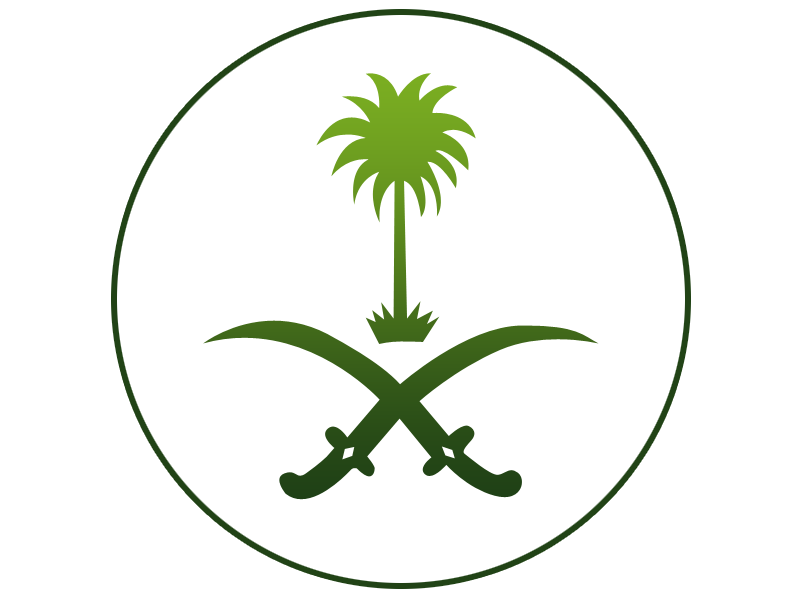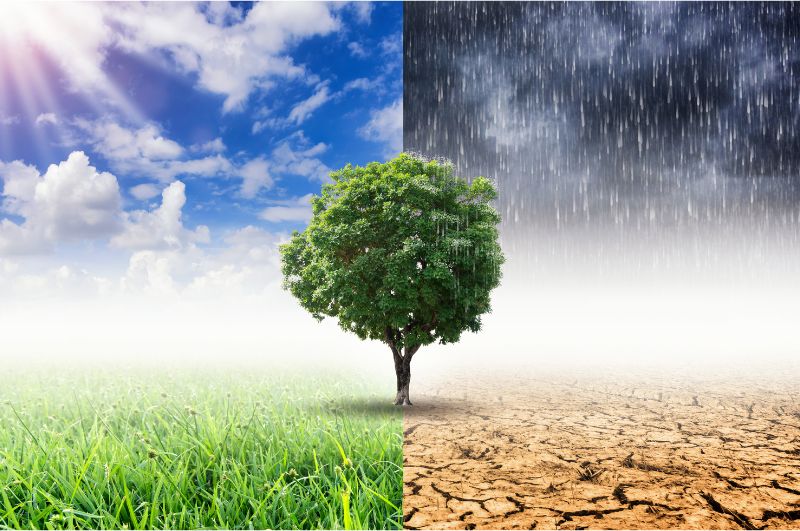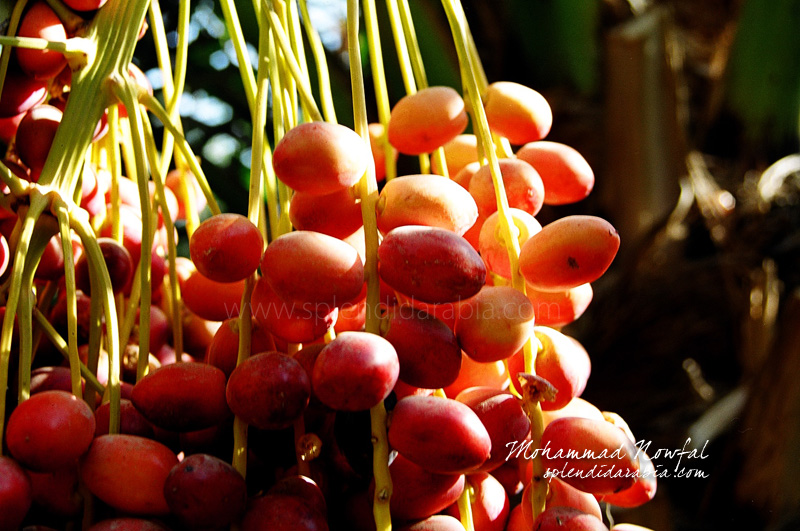The Desert is the most prominent feature of the Arabian Peninsula of which Saudi Arabia is the largest country. Considerably, deserts of Saudi Arabia is more than half the area of complete Saudi Arabia.
The country has three major deserts. Rub’ al Khali (The Empty Quarter) extends over much of the southeast and beyond the southern frontier. It is one of the largest sand deserts in the world. Partially unexplored, Rub’ al Khali has an estimated area of about 650,000 sq km (about 250,000 sq mi) with lesser portions in Yemen, Oman, and the United Arab Emirates.
An Nafud or the Great Nafud is an upland desert of red sands covering an area of 64,000 sq km. It lies at an elevation of 3,000 feet (900 meters) in the northern part of the Arabian Peninsula. The desert has been a barrier to travel for ages; its frequent sandstorms shape immense dunes and are noted for their sudden violent winds.
Ad Dahna’ is a narrow strip of sandy terrain. This reddish sandy desert is in central Saudi Arabia, extending about 1,300 km (800 miles) southward from the northeastern edge of An Nafud to the northwestern borders of Rub’ al-Khali. Thus, Ad-Dahna’ links the great deserts of Saudi Arabia.
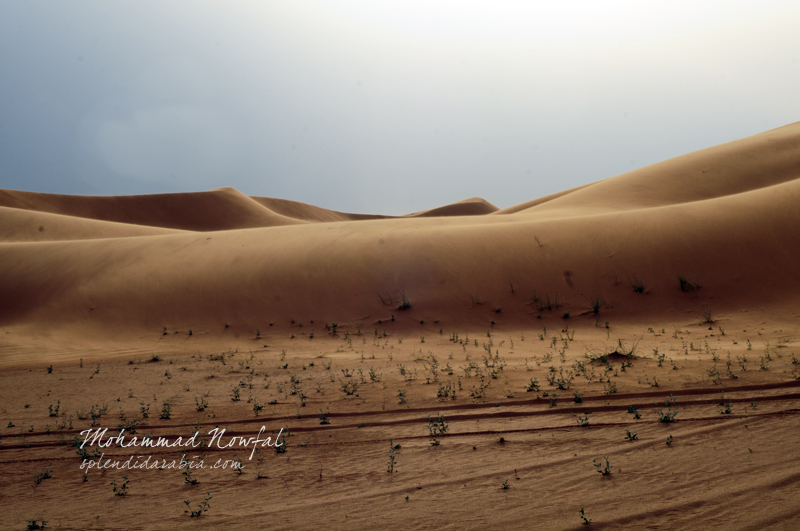

The light of dawn over the silent stretches of Ad Dahnah desert. What makes a desert a desert is the lack of water. Though a hostile place for living beings, deserts are one of the most alluring land features on the face of the earth. Out of which, sand deserts with their differently shaped dunes have a magical charm.
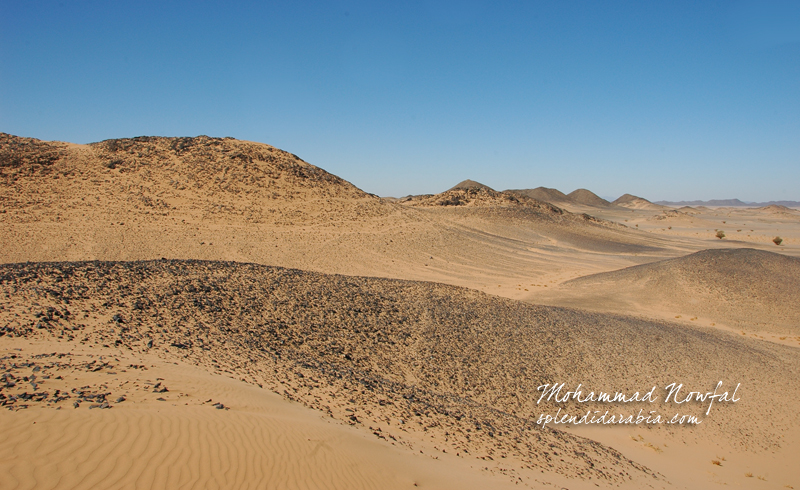

At least a few might have the impression that a desert is always sandy which is absolutely wrong. There are different types of deserts and the above one is gravel in nature.
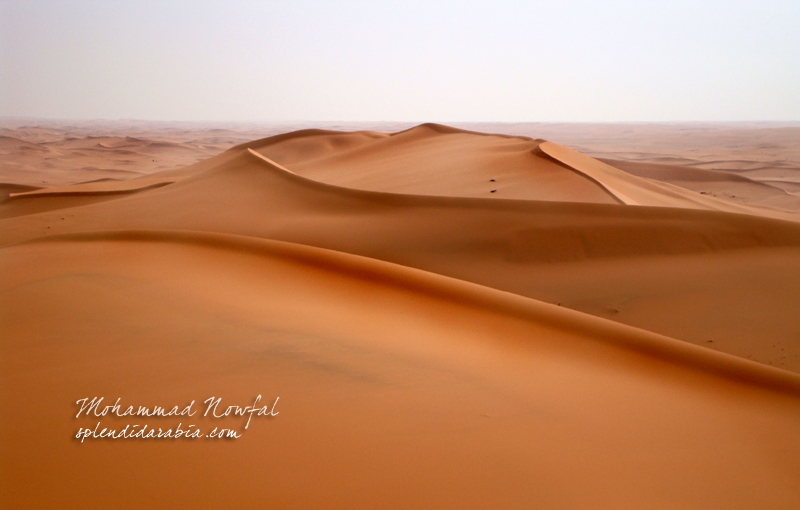

Sand Dunes
During the night, the desert loses the heat very quickly that it accumulated during the day. It causes a significant drop in temperature during the night.
Dunes are only one of the many forms that wind and water create in the desert. The dunes in Arabian deserts can reach meters in height. Ceaseless winds in some areas of the desert make the dunes shift continuously thus transforming the area. The dunes take on different forms depending on the direction of the winds which ceaselessly shape them.
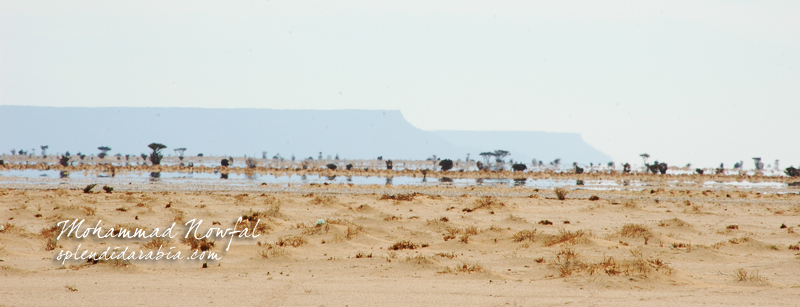

Do you see water?
The most tantalizing phenomenon in the desert is called ‘Mirage’. There is no water, in fact, in the photo though it seems to a traveler that the water is nearby. The shades, shadows, and reflections of objects make it so natural. As we approach closer, it moves further and further! So, don’t be cheated by a mirage in the desert!!
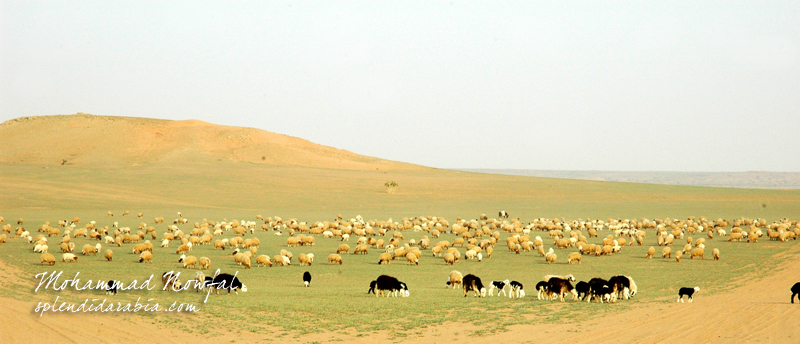

Arq Jaham
Herd of sheep (consists of more than a thousand) grazing at a semi-sandy plain on the way to Summan in the central region. After a rain, the lowlands turn green and attract the herd.
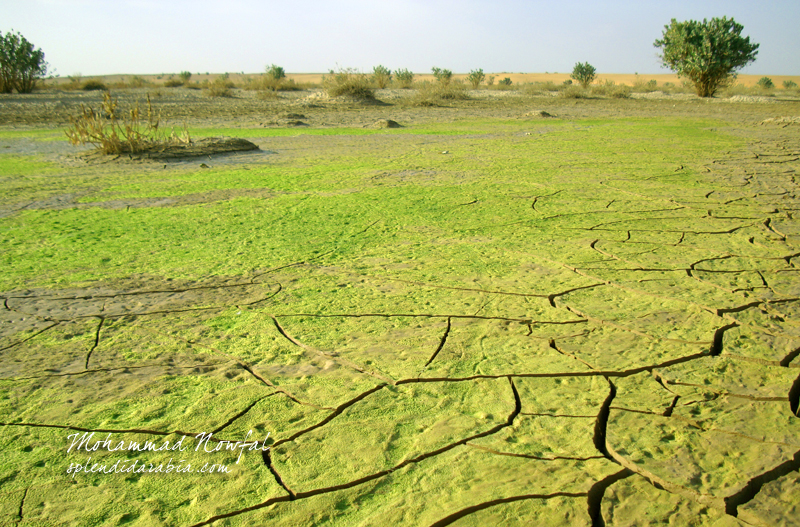

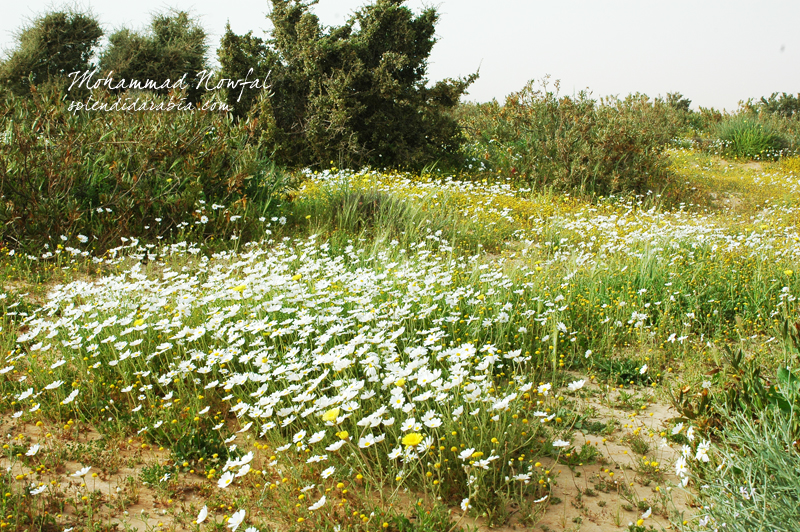

The metamorphosis in the desert is very interesting. In winter, after a good rain, the low-lying lands in the desert accumulate water that stays for a month or so. These waters get dried up over the course of time which does not last more than a couple of months at the most. In a few days, sprouts get out of the rich soil, and in another two months, the whole area will be covered in lush growth of grass and flowers. These areas are called ‘Rawdath’ which means ‘garden’.
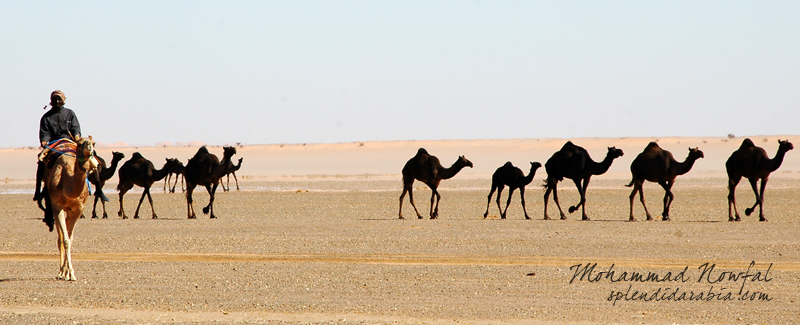

The herd is on the move, looking for new pastures. While the desert seems hostile and perilous to some, it is home to other. Trekking through the deserts of Saudi Arabia, you may come across temporary settlements with herds of camels or sheep, a truck to serve water, feed for the livestock, and a shepherd.
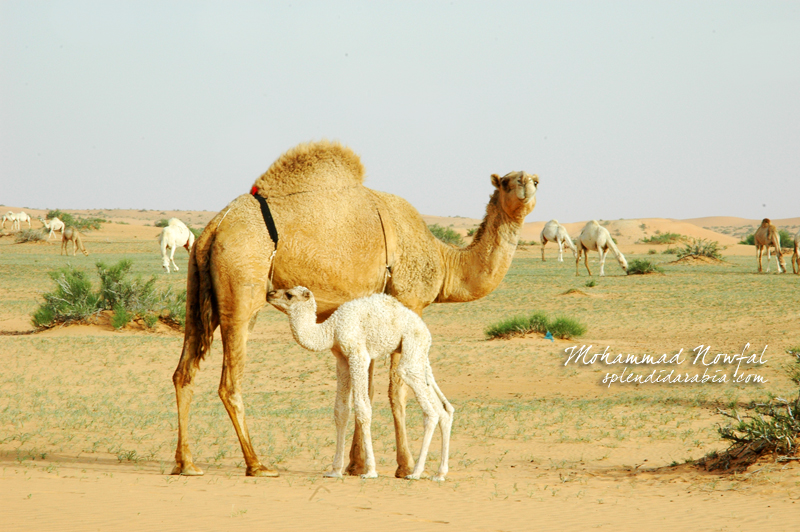

Mother and baby camels
Mother and baby camel at Ad Dahna desert. The baby camel is around two weeks old. At birth, a baby camel will weigh only about 30-40 kilograms and can take a few hours before they are able to stand up.
The Bactrian (or Asian) and the Dromedary (or Arabian) camels are the two types of camels of which Dromedaries are the most commonly found in the Saudi Arabian desert. Bactrian camels have two humps while Dromedary has only one hump.
Today, deserts provide a lot of fun for a trekker. A good amount of Saudi Arabia’s deserts have been explored, though, a major part still remains virgin and unexplored. The endless beauty of it, the ever-changing shapes of the dunes that are combed by desert winds, and the adventures in driving through the soft sands are a few of the moments that a desert traveler never forgets. Once explored the breadth of it, a desert traveler finds himself obsessed with it, simply by the virgin charm of it!

